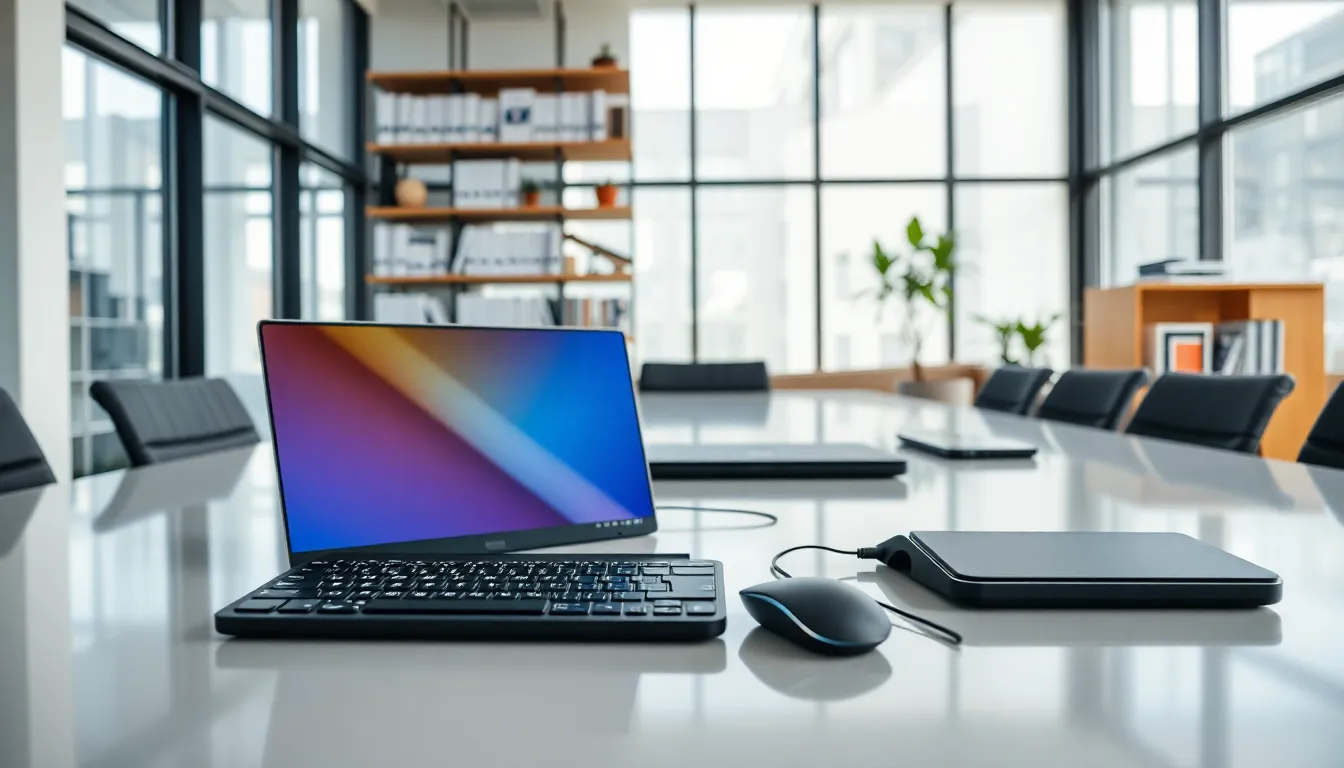Ever wondered what makes your gadgets tick? These mysterious boxes and circuits, known as hardware devices, are the backbone of technology. From smartphones to gaming consoles, they transform our digital dreams into reality. But don’t worry, we won’t get too technical, it’s not rocket science. With a sprinkle of humor and a dash of knowledge, this guide will clarify hardware devices while keeping it light. So buckle up as we jump into the intriguing realm of hardware.
Table of Contents
ToggleUnderstanding Hardware Devices

When it comes to technology, the term “hardware devices” encompasses a broad range of physical components that make up our computers, phones, and other gadgets. Unlike software, which refers to the programs and applications that run on these devices, hardware is tangible, you can touch it, feel it, and sometimes even see it spark.
In simple terms, hardware devices are the essential parts that perform the tasks you command. Whether it’s the motherboard in your laptop or the graphics card in your gaming rig, every device plays a role in computing and performance. The relationship between hardware and software is harmonious, much like peanut butter and jelly, each complements the other. Understanding this relationship is key to grasping how technology operates.
Types of Hardware Devices
Hardware devices come in various forms, each with its unique purpose. Here’s a glimpse at the main types:
Input Devices
These are the interfaces through which users interact with computers. Think of devices like keyboards, mice, and scanners. They allow us to input commands and information.
Output Devices
Once the computer processes data, output devices display or produce results. Monitors, printers, and speakers fall into this category. Ever printed your best friend’s embarrassing photo? That’s output in action.
Storage Devices
Data needs a home, right? That’s where storage devices, such as hard drives and SSDs, come into play. They store everything from your favorite memes to crucial work files.
Processing Devices
This group includes the CPU (central processing unit) and GPU (graphics processing unit). Think of them as the brains of the operation, executing commands and processing data at lightning speeds.
Communication Devices
With the internet being integral to our lives, communication devices like modems and routers help us connect to the world. Without them, streaming cat videos would be a dire challenge.
Each category of hardware plays a distinct role, yet all work together to provide a seamless user experience.
Key Components of Hardware Devices
Understanding the key components of hardware devices can be like uncovering a treasure map: with each piece leading you closer to the epic treasure of tech savvy. Here are the essential components:
Motherboard
This is the main circuit board that connects all components of the hardware. It’s akin to the central nervous system, without it, nothing works.
CPU
The CPU is the brain of the computer, processing instructions and managing tasks. If you’ve ever heard someone boasting about their processing power, now you know why.
RAM
Random Access Memory (RAM) temporarily stores data that is actively being used. The more RAM you have, the more applications you can run simultaneously without slowdowns.
Storage Drives
Whether HDDs (Hard Disk Drives) or SSDs (Solid State Drives), these components store all your data. SSDs are faster, while HDDs offer larger capacities at lower prices.
Power Supply Unit (PSU)
The PSU converts electricity from an outlet into usable power for your computer components. Think of it as the fuel station for your machine.
Each of these components works together in harmony, making it possible for users to enjoy everything from browsing the web to playing the latest video games.
Importance of Hardware Devices in Technology
Without hardware devices, technology as we know it would be non-existent. They serve not just as physical vessels for operations but enhance our overall experience. Here’s why they matter:
Performance
High-quality hardware can significantly boost a device’s performance and speed. Gamers and content creators often invest in advanced hardware to gain an edge.
Reliability
Robust hardware components can reduce the likelihood of failures or breakdowns. Imagine your laptop crashing in the middle of an important presentation, nightmare material.
Innovation
New hardware developments lead to newer technologies. From virtual reality headsets to smart home devices, innovation drives the market forward.
Productivity
Efficient hardware contributes to productivity, enabling users to perform tasks more quickly and efficiently. Whether in a corporate environment or a home office, this matters.
User Experience
Eventually, the design and quality of hardware devices impact user satisfaction. A sleek, well-functioning laptop makes for a more enjoyable experience compared to one that chugs along like a tortoise.
Choosing the Right Hardware Devices
Deciding on the right hardware devices can feel daunting, but it doesn’t have to be. Here’s a handy guide to simplify your choices:
Assess Your Needs
Identify what you need the device for. Are you gaming? Working remotely? Editing videos? Different activities require different hardware specifications.
Budget Wisely
While it’s tempting to splurge on high-end gear, consider what fits your budget. Sometimes, you don’t need the latest model to get the job done.
Research Reviews
Before committing, read reviews from trusted sources. Others’ experiences can provide valuable insights, helping you avoid potential pitfalls.
Compatibility
Ensure that the hardware you choose is compatible with your existing devices. Nothing’s worse than buying a fancy new graphics card only to find it doesn’t fit.
Future-Proofing
Consider devices that can grow with you. Upgradable components can save you money in the long run, allowing you to enhance performance without buying a whole new setup.
Future Trends in Hardware Devices
As technology continues to evolve, so do hardware devices. Here are a few trends to keep an eye on:
Miniaturization
The trend towards smaller, sleeker devices is not slowing down. Innovations like microprocessors enable powerful computing from a device that fits in your pocket.
Increased Connectivity
With IoT (Internet of Things) becoming mainstream, hardware devices are increasingly interconnected. Devices will communicate effortlessly, turning your home into a smart haven.
Sustainable Materials
As eco-consciousness rises, companies are beginning to manufacture hardware from sustainable materials. Expect to see more environmentally friendly components in the near future.
Enhanced Performance
Advancements in hardware technology will lead to devices with even better performance, in terms of speed, power, and efficiency. Future hardware could revolutionize everything from gaming to virtual reality.
Artificial Intelligence Integration
AI is becoming a driving force in hardware development. From smart assistants to intelligent data processing, hardware and AI will work hand in hand to create more efficient devices.





